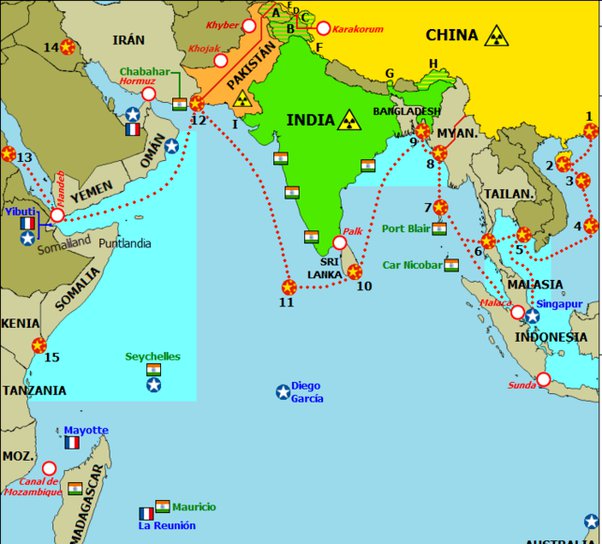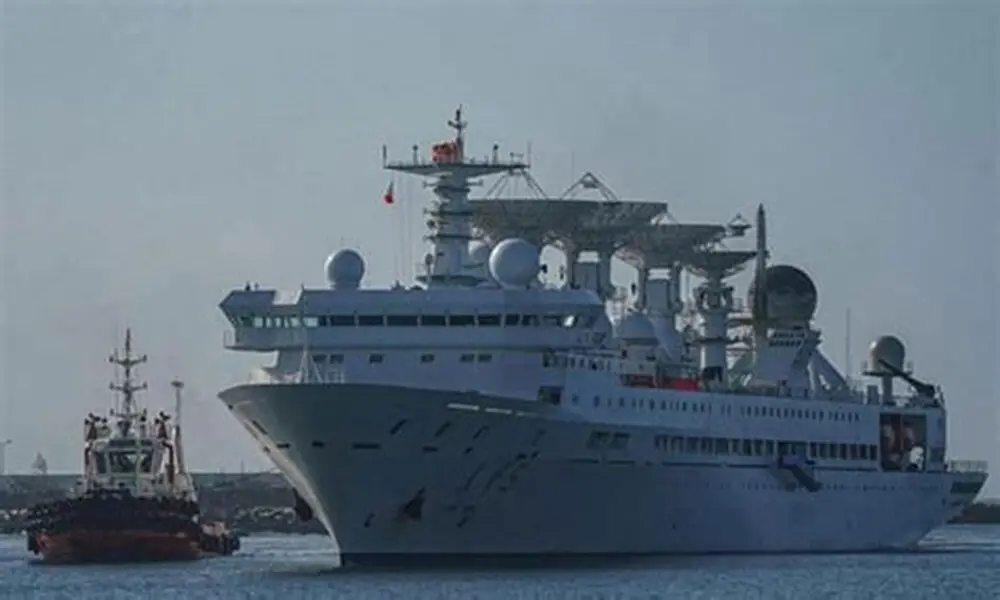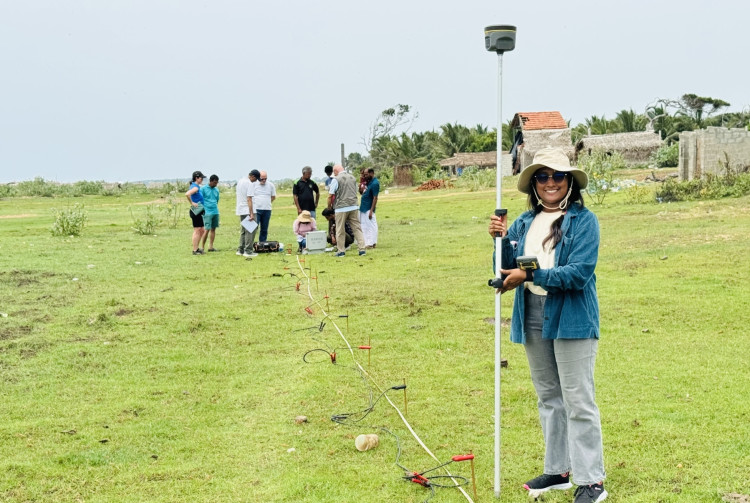Indubitably, the Indo-Sri Lankan fishermen dispute has created a tense situation in Palk Bay. On both sides, fishermen protest and blame each other’s governments. While Tamil Nadu fishermen blame the Sri Lankan Navy (SLN), fishermen in Sri Lanka protest and urge the Indian government to resolve this conflict. The SLN periodically detained and arrested fishermen from Tamil Nadu.
The tension heating up in Palk Bay is not a good sign amid the discussions on the proposed Indo-Sri Lanka connectivity plans with the proposed land bridge and tunnel across the Palk Strait to connect Dhanushkodi in Tamil Nadu with Talaimannar in Sri Lanka. The International Maritime Boundary Line (IMBL), which divides the bay, is 137 kilometers long and varies in width from 64 to 137 kilometers.
The Indo-Sri Lanka fishermen dispute is not a new phenomenon. It’s a decades-old problem. Efforts made in the past by both governments to resolve this conflict have not yielded the expected results. Now, the fishermen’s dispute in the Park Strait seems to be a tool for creating geopolitical tensions in the region.
Indian fishermen have been fishing in Sri Lankan waters for centuries. During the British colonial rule in Ceylon, discussions on the ‘Fisheries Line’ were held in 1921. Colonial delegations from Ceylon and India agreed on the need to avoid overexploitation and take measures to conserve marine resources. Kachchatheevu was a point of contention during these talks. The delegates reached a consensus on the ‘Fisheries Line’ three miles west of Kachchatheevu and made compensations elsewhere to ensure “an equitable apportionment in the fisheries domain for both Sri Lanka and India”. In the determination of the ‘Fisheries Line’ of 1921, sovereignty was not a subject of discussion and equidistance did not play a significant role, as both nations were under British rule at the time. Due to the lack of ratification of the agreements by the British Colonial Office, the ‘Fisheries Line’ of 1921 was a source of confusion.
Even in the post-colonial period, there were no formal maritime boundaries, and the fishing line remained free. Since the 1970s, Sri Lanka has sought to emphasize the need for a clear maritime boundary. It was based on Kachchatheevu, which is 285 acres of strategically important land for fishing activities. As a result, in 1974, India agreed to cede Kachchatheevu to Sri Lanka through a bilateral maritime agreement. In another agreement in 1976, the boundary was further extended to Palk Bay, including the Gulf of Mannar and the Bay of Bengal.
However, these agreements were signed amid strong objections from the Tamil Nadu polity. According to Tamil Nadu, the handing over of the island of Kachchatheevu in Palk Bay to Sri Lanka was a grave mistake. In 1991, the Tamil Nadu Assembly adopted a resolution demanding the retrieval of Katchatheevu. Later in 2008, Chief Minister Jayalalithaa moved the Supreme Court to nullify the agreements of 1974 and 1976.
In 2014, she wrote to PM Modi to make efforts to retrieve Katchateevu from Sri Lanka. She described the agreements ceding Katchatheevu to that country as “ill-advised.
Due to this, the retrieval of Kachchathivu is still a hot issue in Tamil Nadu politics. The BJP leadership in Tamil Nadu is also insisting that Kachchadive should be brought back under Indian control.
In 2015, Sri Lanka’s Prime Minister Ranil Wickramasinghe stirred up a controversy in an interview for the Chennai-based Tamil Channel (Thanthi TV), warning that Indian fishermen may be shot if they intrude into Sri Lankan waters. He asked, “Why are you coming into our waters? Why are you fishing in our waters? The reality is beyond these questions because, due to the geographical proximity between Sri Lanka and India, Tamil Nadu fishermen cannot be permanently barred from entering Sri Lankan waters, and Indian fishermen have been fishing freely in this area for centuries. During the civil war in Sri Lanka, Tamil Nadu fishermen were engaged in fishing in Sri Lankan water unrestricted.
All the Tamil armed groups that emerged in the northern province of Sri Lanka used Indian fishermen for their maritime transport and material transactions. During the LTTE-led Elam war in Sri Lanka, “Palk Bay and the Gulf of Mannar have been a haven for illegal trafficking of humans and material from both sides.” During this period, none of the Tamil fishermen associations in the Northern Peninsula objected to the Tamil Nadu fishermen entering the Sri Lankan waters.
Local politics is also an influencing factor on both sides. However, this issue should be approached in a way that does not affect the livelihoods of the fishermen in both countries. When President Wickremesinghe met Prime Minister Narendra Modi on July 20, 2023, in New Delhi, both leaders agreed that they should proceed with a humane approach in this matter. So far, more than 80 Indian fishermen have been killed in the past ten years, and more than 160 others have been injured on suspicion of crossing the boundary. Despite various diplomatic moves to resolve the issue, the problem persists.
It is obvious that China is trying to increase its military and maritime influence in the Bay of Bengal. Against this backdrop, Sri Lanka’s Northern Fishermen’s issue can be used as a geopolitical tool by India’s rivals. Northern fishermen have been blaming the Indian government for the long-standing, unresolved issue. Recently, a section of northern fishermen associations protested in front of the Indian Consulate in Jaffna. Given this background, CSST urges that both governments focus on a new approach in contrast to the approaches suggested so far.
As none of the policies suggested so far have failed to solve this problem, the root of the problem lies in the fact that Indian fishermen engage in cross-border fishing. So far, only the Sri Lankan Navy is dealing with this issue. In contrast, a joint naval monitoring mechanism should be developed to detect transboundary fishing in the Park Strait and Gulf of Mannar.
Kachchatheevu is considered to be a joint station for these naval operations between the two countries. This will prevent arbitrary arrests by the SLN and deter Indian fishermen when they try to cross the maritime boundary. This is the only way to prevent tension from escalating further.
Amid the adversarial move of China in the Indian Ocean region, the tension in Palk Bay cannot be viewed as a mere fishermen’s issue. The late Prime Minister Indira Gandhi called it a ‘sheer rock’ with no strategic significance, but the current context of geopolitics negates this calculation. Against this backdrop, a new bilateral maritime agreement, including a joint naval task force, is needed to handle this strategic challenge, as the dimension of fisheries disputes has changed drastically.
China has tried to set up a hybrid renewable energy system mixed with solar, wind, and other renewables on three islands in the Jaffna Peninsula. It was later cancelled. There is no economic reason for hosting such a project in a place so close to India. There was only one strategic intention, which was part of China’s expansion strategy in the Indian Ocean. This is a vivid example of what kind of strategic challenge both countries could face in the future based on Palk Bay.
If these issues are not considered and acted upon, it will be like “providing meat to Beijing to target New Delhi.”




